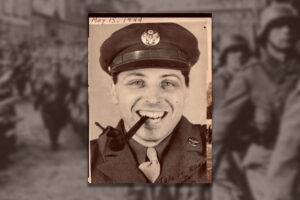When I arrived at the memorial gathering for Kate, her husband gestured toward chairs that stood, varied and waiting in the large living room. I took a seat a few chairs away from guests who had preceded me. I estimated that at least another twenty-five chairs bordered the intricately woven oval rug. There was still enough time to scan this chair “collection” before all the friends and family would arrive.
These were not ordinary folding chairs borrowed for the occasion. There were compact bistro chairs, some carved from wood, others framed in metal. Also, rockers, some with gliders attached, ideal for a mother nursing a new baby or for rocking the baby to sleep. There were solid, overstuffed chairs–some upholstered in neutral tweedy fabrics, others covered in a bright burnt orange- deep pink and green patterned silk. There were Wing Chairs, Bentwood and even Campaign Armchairs covered with varying neutral colored canvas. There were even two-person benches that featured needle-pointed seats. In any other setting, I would have tried them all out.
Kate’s husband, Frank, though deeply grieving his loss, came over and thanked me for coming. I could not resist asking him about the chairs.
“Well, you know, we used to live in a very large house. These chairs, and I promise you, there are even more, were placed in various rooms and hallways. I should probably curate the collection when things settle down, because this much smaller house, though charming, is a bit too small for all these chairs. But truly, I haven’t had the heart to do it.”
He stopped for a moment to swipe his fingers across his eyes.
“You know,” he said with a tearful smile,” Kate never met a chair she didn’t want to take home!”
As spirited and warm the visitors’ recollections about Kate were, I was losing focus. I could not stop thinking about Frank’s last comments. Why, I wondered, was Kate so enchanted by chairs? The meeting went on for about an hour with revelations by friends who had spent time with her, knew her from childhood, from college, from charity work they had done together and, finally, from nurses and doctors who had attended her in her last days. At the end, Frank invited all of us to view the art on the walls, the photographs on bookshelves and side tables, to appreciate Kate’s love for her family, her horses and art of all types. All of the images revealed her stunning appearance: long, lithe and erect, even in her later years. But nothing about chairs.
On the drive home, I wondered if she, like me, had experienced the horror of playing “musical chairs” in first grade. In this game, there are enough chairs lined up for each player, minus one. Music is played as the children march around the chairs. The music stops suddenly and they scramble to find a chair. Of course, one child will be an immediate loser. I wondered if she had come home that afternoon, telling her mother she never wanted to go back to school. That she expected something wonderful and magical when she heard “musical chairs.” Instead, the children learned how to push each other out of the way and to laugh at the poor soul who had not pushed hard enough. He or she was quite literally an outcast. It didn’t matter how many children suffered this fate (because, of course, another chair was removed before every round). Could that searing pain have lasted for so many years? The injustice of it all? The deceit of naming the game “musical chairs” when it totally defied the democracy of music? So, even many years later, Kate, the socialite, would never plan a party or any kind of event without making sure there was more than enough seating.
This possibility did not necessarily explain her obvious interest in choosing gorgeous chairs: easy chairs upholstered in deep blue velvet, bistro chairs, spare but unique in shape and construction. Is it possible that as a young girl she lived alone with her mother, since her father was away to fight in a war? How often would they run to the mailbox, hoping for a letter or word that he would be home by next month? If not, they would hug each other, hoping against hope that he was well and could join them soon.
Perhaps, Kate would have remembered the tales of Elijah, the prophet, the magician with countless disguises. At the Passover Seder, as was customary, they would leave a glass of wine for him to sip as he visited each home on Seder Night. The hope was that every family would welcome “strangers,” they would be willing to stretch their hearts to hear new things and gain new wisdom. Elijah would arrive and approve, declare the coming of the Messiah and the world would know peace. It occurred to her that even the heroic but mysterious Elijah would be exhausted after all those visits, so she would have chosen the least worn of their unmatched arm chairs and prepared to decorate it and fit the seat with a soft cushion. She even found a pair of her father’s slippers to place at the foot of the chair for extra comfort.
One day while she was in the shower, it came to her in a flash! If families invited and coaxed Elijah to come (he was “tarrying” so long), why couldn’t she and her mom do the same to wait for her dad?
Her mother, who took in sewing and saved the scrap fabric to create artistic pouches, brooches and other small novelties, smiled to hear this idea and said, “Kate, my Kate, what a huge heart you have. Why ever not?” As days rolled into weeks and weeks into months, Kate, watching the magic her mother crafted, found small ways to add to the beauty and comfort of the worn chair: ribbons tied to the arms with beads knotted into tassels. A small embroidered pillow to fasten to the top of the chairback—to lean against. He would be so tired.
When her dad finally came home, he might have been seated in a wheel chair, too tired to say a word. Clearly, also too weak to stay seated. Her mom, clutching her cheeks, would have recovered enough to wheel him straight into their bedroom and to help him into bed. Sometime later they would manage to find a “cure chair” on wheels that was originally designed, more than one hundred years ago, to help TB patients regain their health in the fresh air of the Adirondack Mountains. Another chair for Kate to recall fondly, since her dad would recover well in the cure chair, especially when they rolled it outside for fresh air. He would also recover his good humor and eventually sit in the decorated Elijah Chair, posing as a possible Elijah, stroking his beard, or as a monarch on his throne, adjusting his make-believe crown while making funny faces.
It stands to reason that a home like this one, so generously studded with paintings, sculptures and textile arts must have had a passionate and knowledgeable Art Major making the selections. Is it not possible that Kate was assigned to visit a great number of galleries to round out her studies? Might she have noticed only single small benches for patrons who might want to gaze at the artistic works for an extended time, who might want to try to enter the painting or even memorize it enough so that it might begin to belong to them? Could she have asked to speak to a curator or another museum official to suggest strongly that they provide sets of benches or chairs to accommodate at least two people who may want to share opinions about the art, who may want to forge new connections with other art lovers, even future companions? Surely these professionals must have been grateful for this suggestion. Perhaps they remedied the situation soon enough for Kate to enjoy the extra seating. Perhaps it was there that she met Frank.
Gentle, loving Frank, it seems, voiced no objections to her ever-burgeoning collection. And her children, if they ever engineered their own train by placing chairs in a long line and then piling their most precious blankies and toys onto each “car,” must have played carefully enough so that the chairs still look pristine.
I was on my way home when a revelation stopped me in my tracks. I had to pull over just a few blocks from my house, to Google a life changing poem (at least for me). I had come upon it only a few days before: Pat Schneider’s “The Patience of Ordinary Things.” It begins,
It is a kind of love, is it not?
How the cup holds the tea,
How the chair stands sturdy and foursquare…
…I’ve been thinking of the patience
Of ordinary things…
A chair could be saddle, an invitation, a hug and certainly an honor; it could be a kind of magic carpet for “armchair travelers” and even a support for musicians who might “transport” their audiences to dreamy places. Or so I imagined before reading this poem. Now it seems to me that Kate intuited something deeper–that a chair, all on its own, is capable of a dynamic patience. All these “chairs in waiting” might have cheered her in her last few weeks, even years. All these chairs, patiently waiting for fresh, new possibilities, not the least of which would be to offer “strangers” a place at the table. And today all the dear ones who filled those seats offered fitting tributes and, by their presence alone, realized that Kate’s beauty shone from a radiant soul.





